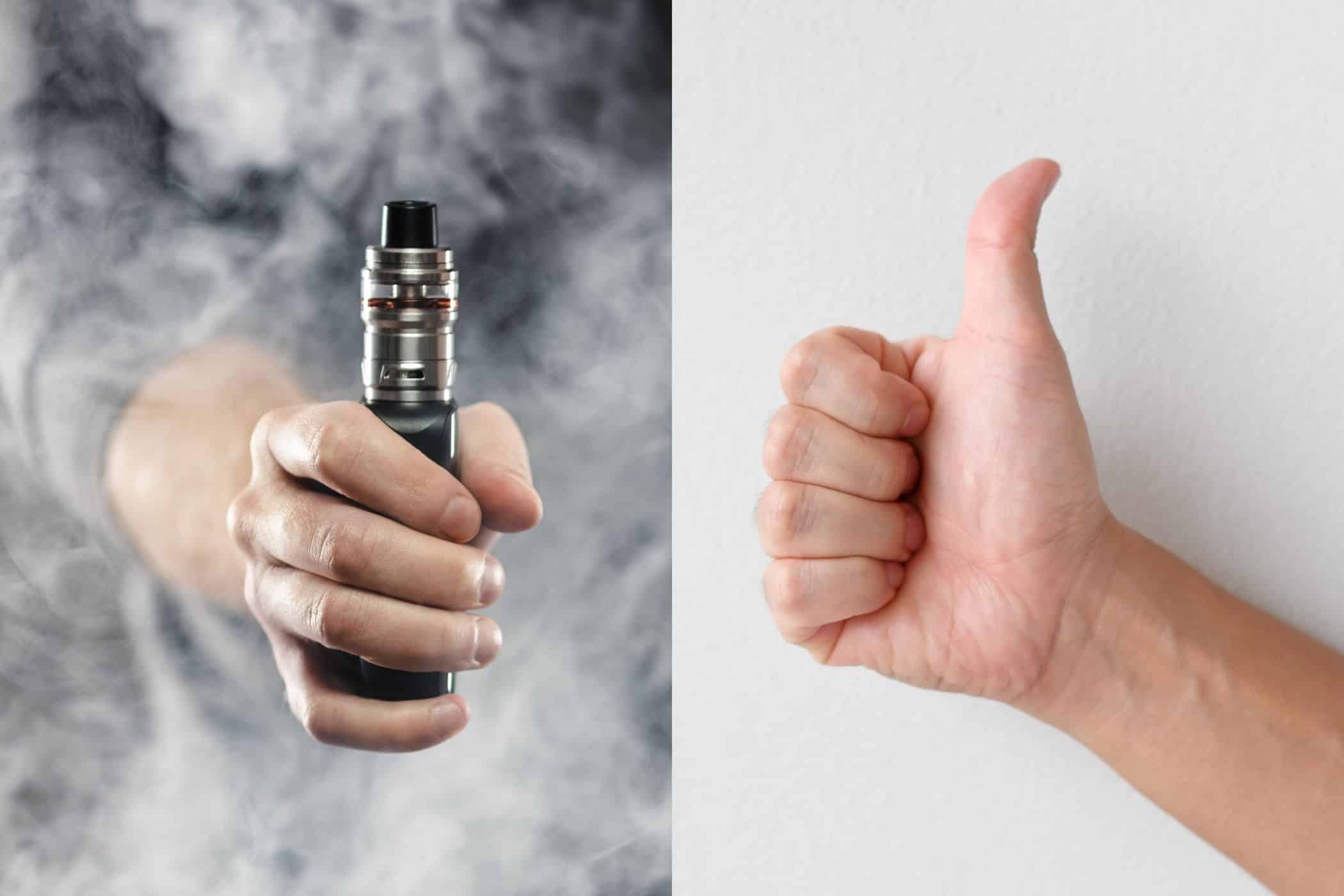How Many Times Should You Hit a Vape a Day: Determining Optimal Usage
Vaping has become a popular alternative to traditional smoking, with many individuals turning to e-cigarettes and other vaping devices for their nicotine intake. One common question that arises among those new to vaping is how many times they should hit their vape device in a day. This topic can be subjective and often depends on personal preferences, tolerance levels, and the type of vape device being used.
While there is no definitive answer to the appropriate number of hits per day, it is essential to understand the factors at play and how they can affect individual experiences. Some factors to consider include the amount of nicotine contained in vape juice and the capacity of the vaping device being used. The effects of vaping may also vary depending on a person’s nicotine tolerance and how often they vape.
In addition to these factors, it’s important to consider the potential side effects of excessive vaping, such as dependence on nicotine and irritation of the throat or lungs. Those new to vaping should start with moderate use and closely monitor how their body responds to determine the right balance for their personal needs. This approach will help ensure a safe and enjoyable vaping experience while minimizing potential risks.
NEW CUSTOMER DISCOUNT
Save 15%
15% OFF YOUR ENTIRE ORDER FOR NEW CUSTOMERS USE CODE WELCOME15!
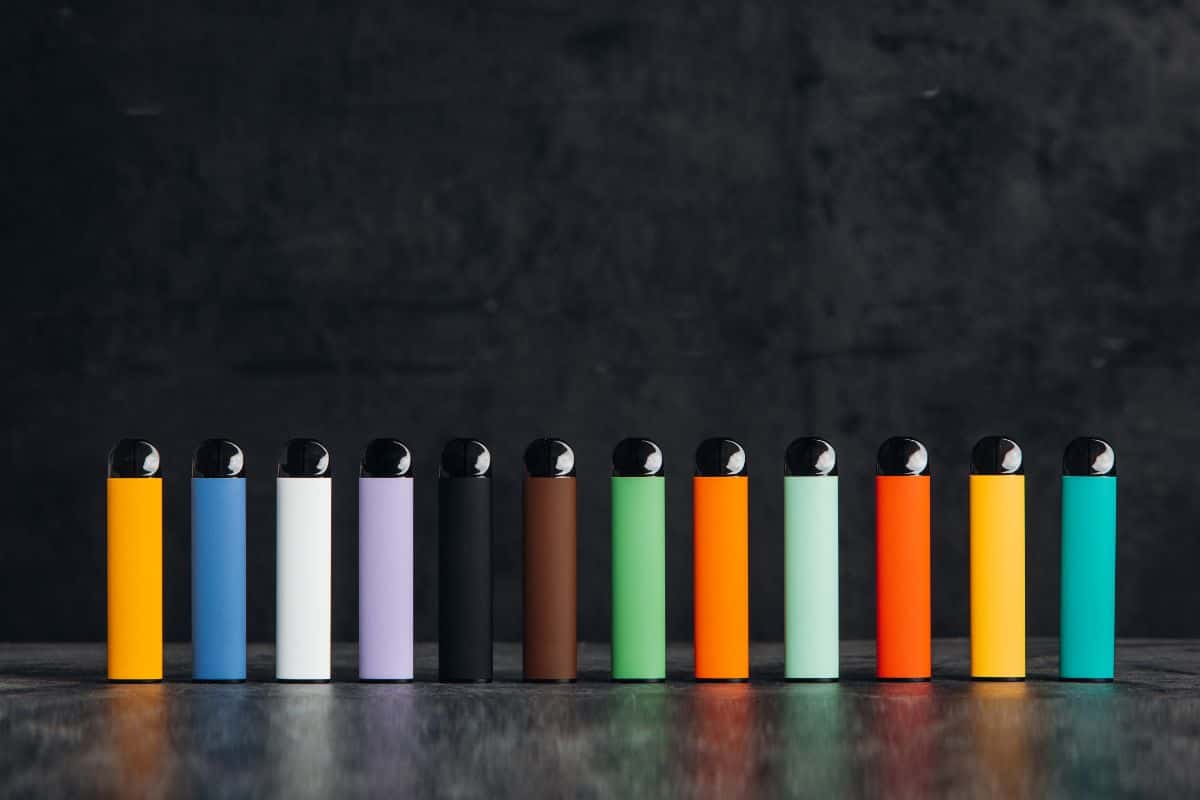
Table of Contents
The Basics of Vaping
Vaping has become increasingly popular, with a wide variety of devices available for users to enjoy. To begin with, let’s explore what a vape is. Vape devices, also known as e-cigarettes or vaporizers, are electronic devices that heat a liquid, called e-liquid, to produce an inhalable vapor. This vapor is often flavored and may or may not contain nicotine.
There are different types of vape devices, such as vape pens, which are small and resemble traditional pens, and vape mods, which are larger, more powerful devices that offer customization options. Many beginners start with a simple vape kit that includes the necessary components to get started.
When it comes to the actual vaping process, there are several components involved. The atomizer is the heating element that warms the e-liquid and turns it into vapor. There are different types of atomizers, such as RDA (Rebuildable Dripping Atomizer) and RTA (Rebuildable Tank Atomizer). The mouthpiece is the part that the user inhales through, and the tank or cartridge holds the e-liquid.
Determining how many times a person should hit a vape per day depends on personal preferences and individual factors such as nicotine concentration and sensitivity. It’s essential for a vaper to pay attention to their body’s reactions and adjust their vaping habits accordingly. There is no one-size-fits-all answer to this question.
If you are using a dry herb vaporizer instead of an e-liquid device, the frequency of use might vary. It’s important to remember that the type of device, its settings, and the specific goals a user has in mind can greatly impact how often they should vape.
In conclusion, understanding the basics of vaping is crucial for both newcomers and experienced users alike. The type of device, vaping frequency, and personal preferences play a big role in the overall experience. As with any activity, it’s essential for users to pay attention to their bodies and adjust their habits accordingly.
Understanding E-Liquids
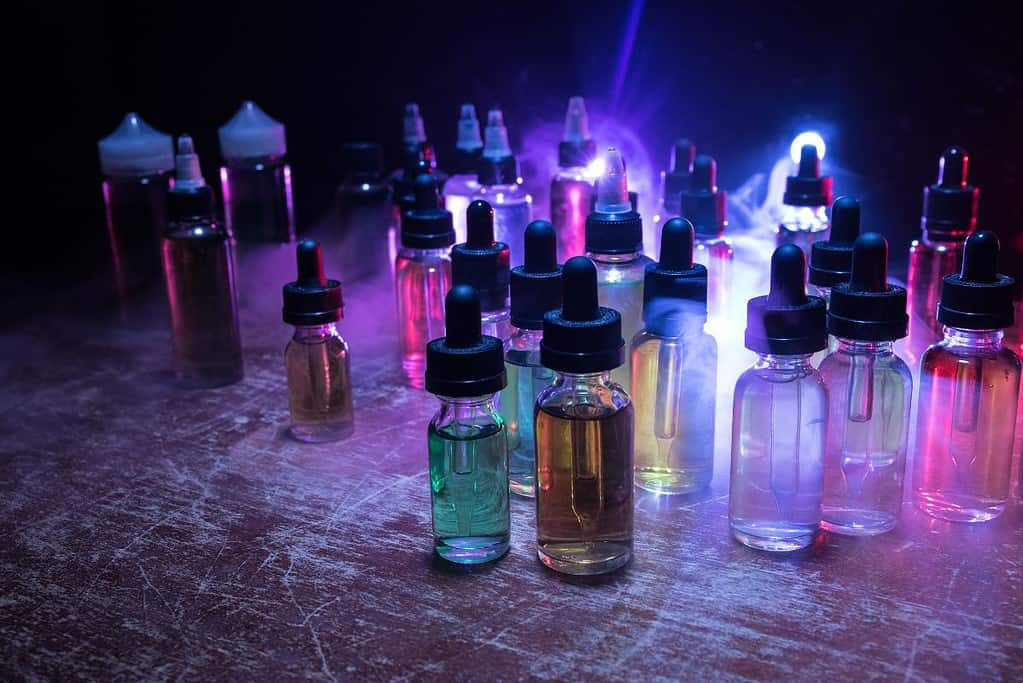
E-liquids, also known as vape juice, play a crucial role in determining the overall vaping experience. The liquid base typically contains varying levels of nicotine, flavors, and other compounds like THC or CBD. Understanding the composition and variety of e-liquids available can help users make informed choices when selecting the right vape juice.
There are numerous e-liquid flavors to cater to different preferences, ranging from classic tobacco to fruity or dessert-inspired flavors. Flavored e-liquids can significantly impact the satisfaction and enjoyment of vaping sessions. Additionally, it is essential to consider the nicotine concentration of e-liquids, as this directly affects the strength and intensity of the vaping experience.
Nicotine e-liquids come in various forms, with the most common being freebase nicotine and nicotine salts. Freebase nicotine is the standard form used in many e-liquids, while nicotine salts are a newer, more potent alternative. It provides a smoother hit with higher nicotine concentrations, potentially leading to a more satisfying experience for users seeking a powerful nicotine hit.
Some e-liquids also include THC or CBD, catering to users seeking the potential medicinal or recreational benefits of cannabis-derived compounds. While THC is known for its psychoactive effects, CBD is primarily used for its potential therapeutic properties. For example, some people use CBD-infused edibles for anxiety relief.
Another aspect of e-liquids is their potency. The potency of a vape juice heavily influences the vaping experience, depending on individual preferences and tolerance levels. Users should carefully consider the concentration of active substances like nicotine, THC, or CBD before choosing the right e-liquid to suit their needs.
Lastly, some e-liquids are tailored for vaping with wax pens, which are designed specifically for vaporizing cannabis concentrates. These concentrate-based e-liquids contain higher levels of THC or CBD than regular vape juices and provide a more intense experience.
In summary, understanding e-liquids is essential for making informed decisions about one’s vaping habits. By considering the various options, flavors, and composition of vape juices, users can optimize their experiences to suit their preferences and desired intensity.
Effect of Vaping on Health
Vaping has become increasingly popular, especially among young people. It is important to understand the impact of vaping on users’ health to make informed choices. E-cigarettes produce vapor that is inhaled, which differs from traditional cigarettes that produce smoke containing harmful substances like tar, carbon monoxide, and other toxic chemicals.
One of the primary concerns of vaping is its impact on the lungs. While e-cigarettes do not contain tar, they still produce a vapor composed of various chemicals, some of which may have adverse effects on lung health Impact of vaping on respiratory health. The long-term effects of these chemicals remain uncertain; hence, caution is warranted.
Another concern is the potential for addiction. Many e-cigarettes contain nicotine, a highly addictive substance, and could lead to dependence on vaping. This dependency may result in side effects such as dry mouth, dizziness, or headaches. Moreover, long-term use of nicotine has been linked to an increased risk of developing cardiovascular diseases.
A common belief is that vaping acts as a ‘gateway’ to traditional cigarette smoking, especially among adolescents. However, recent studies have shown a decrease in past 30-day smoking rates amid the rise of e-cigarette use The rise of e-cigarettes, pod mod devices, and JUUL among youth. Nonetheless, it is essential to be aware of the possible subsequent risks associated with e-cigarette use.
In conclusion, while vaping may be considered a less harmful alternative to smoking traditional cigarettes, it is not without its risks. The effects of vaping on health, particularly in the long term, require further research and understanding to provide definitive answers.
Vaping Dosage and Frequency
| Dosage and Frequency | Description |
|---|---|
| Nicotine Strength | Choose e-liquids with nicotine strengths that match your previous tobacco consumption, if you’re using vaping as a smoking cessation aid. |
| Nicotine-Free Vaping | If you are not a smoker or want to avoid nicotine, opt for nicotine-free e-liquids to minimize health risks. |
| Gradual Reduction | If your goal is to quit smoking, consider gradually reducing nicotine levels in your e-liquids to wean yourself off nicotine. |
| Individual Tolerance | Be mindful of your individual tolerance to nicotine and how it affects you. Avoid excessive nicotine intake, which can lead to adverse effects. |
| Occasional Use | Occasional, non-habitual vaping carries fewer risks than frequent, regular vaping. Reserve vaping for specific situations or cravings, if necessary. |
| Vaping as a Substitute | Use vaping as a temporary substitute for smoking, especially in situations where smoking is not allowed, to reduce overall tobacco consumption. |
| Awareness of Health Risks | Stay informed about the potential health risks associated with vaping, including lung and cardiovascular issues, and make informed decisions accordingly. |
| Consult a Healthcare Professional | If you’re using vaping for smoking cessation or harm reduction, consult a healthcare professional for guidance on dosage and quitting strategies. |
| Hydration | Stay hydrated, as vaping can cause dehydration. Drink plenty of water to maintain overall well-being. |
| Self-Monitoring | Pay attention to how vaping affects you, both physically and psychologically, and adjust your dosage and frequency accordingly. |
| Avoid Chain Vaping | Avoid chain vaping (rapid, consecutive puffs) to reduce the risk of nicotine overdose or adverse reactions. |
When it comes to vaping, determining the right dosage and frequency is essential. The number of hits or puffs an individual should take per day depends on several factors, such as personal preferences, reasons for vaping, and the type of vaping device used.
Average users typically take around 200 puffs per day, but this number may vary based on individual preferences and tolerance levels. For beginners, it is recommended to start with fewer puffs and gradually increase the frequency as needed. Some vaping devices, such as 6000 Puff Disposable Vapes or 2500 Puff Disposable Vapes, can provide a wide range of puffs without refilling, allowing users to better control their dosage.
Inhaling while vaping should be done slowly and gently to ensure proper absorption of the vapor. It’s crucial to avoid inhaling too forcefully, as this may result in coughing or irritation. It is essential to note that chain vaping, continually taking drags from a vape, can lead to excessive nicotine consumption and potential health risks. To minimize these risks, users should opt for vaping devices with lower nicotine levels, such as 5000 Puff Disposable Vapes.
Not all vaping devices have the same level of nicotine or vapor production. Devices like Flum Pebble 6000 Puffs Disposable Vape and SMOK Novo Bar AL6000 Disposable Vape offer a high number of puffs with different nicotine concentrations, allowing users to find a balance between their desired dosage and vaping frequency.
In conclusion, the optimal number of hits or puffs a person should take per day depends on their individual preferences, vaping goals, and device used. Users should give importance to finding their unique balance between dosage and frequency while keeping potential health risks in mind.
From Smoking to Vaping
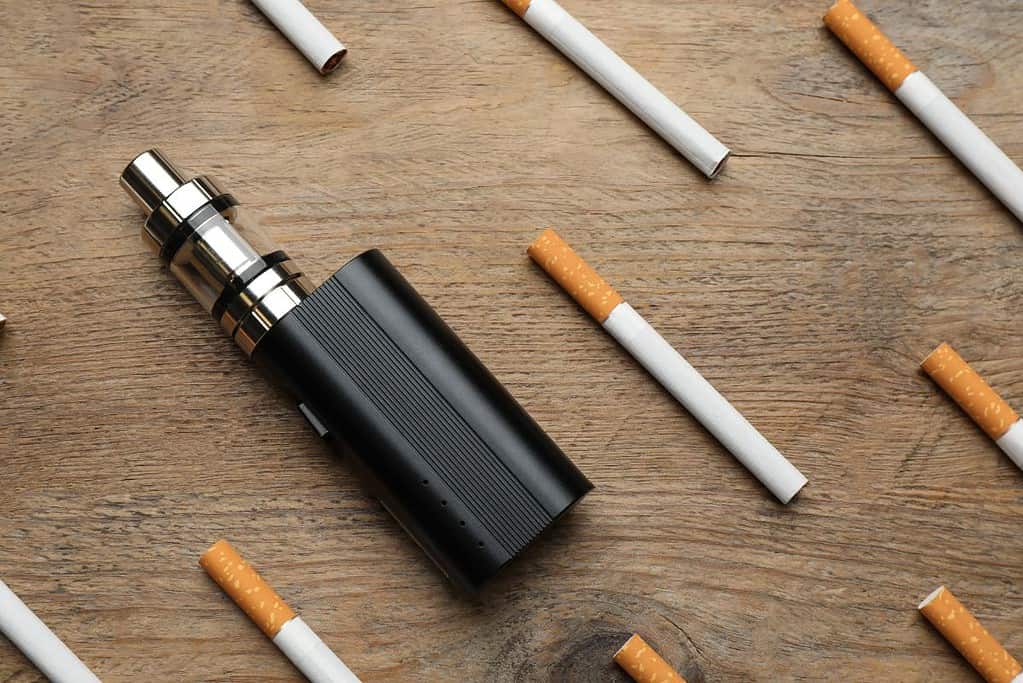
Quitting smoking can be a difficult journey for many individuals. Turning to vaping as a cessation tool has become increasingly popular as it provides a way to gradually reduce nicotine intake without completely giving up the experience of smoking. Vaping can offer tobacco users an alternative path to eventually quitting nicotine use altogether.
One central concern for those transitioning from smoking to vaping is the nicotine content. Nicotine is a highly addictive substance found in traditional cigarettes and some vaping products. Understanding how to get nicotine out of your system is essential for individuals who want to quit smoking or vaping. Luckily, there are methods available to help individuals detox and clear their systems of nicotine within a relatively short period.
Choosing the right e-cigarette or vape pen is an important decision for those considering the switch. It’s crucial to select a device that can provide the desired level of nicotine with the option to reduce or increase the concentration as needed. Moreover, transitioning to vaping may come with its set of withdrawal symptoms. To better anticipate these challenges, understanding the vaping withdrawal timeline can be helpful during the quitting process.
It is worth noting that while vaping may be a stepping stone towards quitting smoking, it is not entirely risk-free. Vaping products still contain nicotine and other chemicals that pose potential health risks. Therefore, the ultimate goal should be to eventually cease using all forms of nicotine products, including vape pens and e-cigarettes.
In conclusion, transitioning from smoking to vaping can be a helpful strategy for individuals looking to quit smoking. By gradually reducing nicotine intake and understanding the withdrawal process, users can work towards a healthier, nicotine-free lifestyle.
Selecting Your Vape Equipment
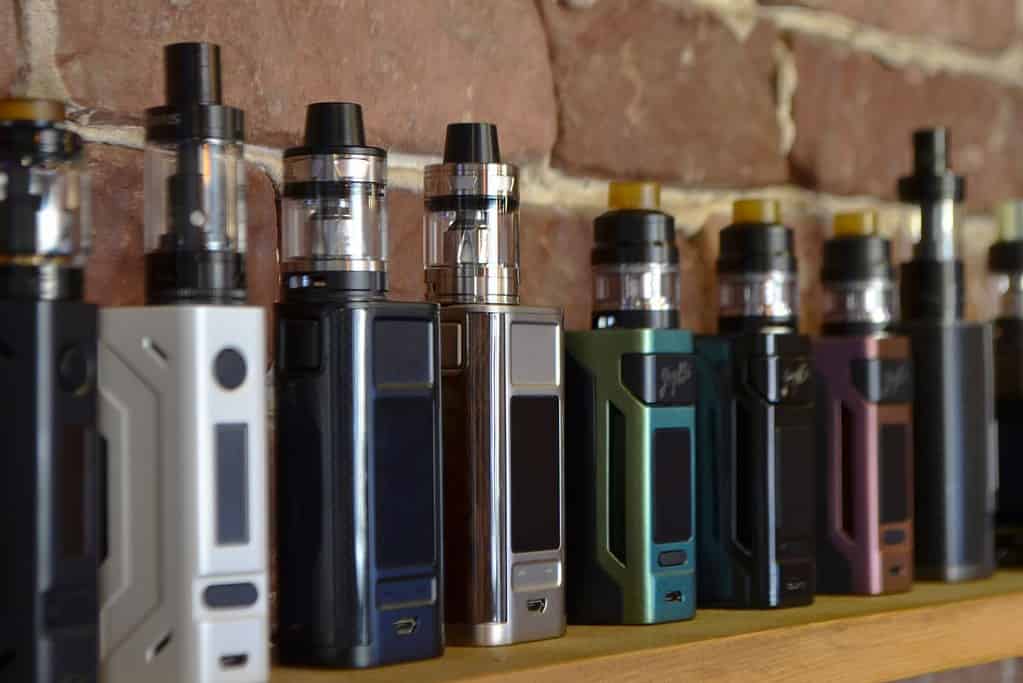
When choosing your vape equipment, it’s essential to consider the type of device, temperature settings, battery life, and cartridge compatibility. Selecting the right vape pen or e-cigarette can enhance your overall vaping experience.
The first factor you should take into consideration is the device itself. There is a wide range of vaping devices available on the market, including simple vape pens and more advanced e-cigarettes. Consider your personal preferences, budget, and vaping habits when selecting the ideal device for you.
Another crucial aspect is temperature control. Some devices offer adjustable temperature settings, allowing you to fine-tune your vaping experience according to your preferences. Optimal temperature can enhance your vape session, and it is essential to select a vape pen or e-cigarette that offers this feature.
Battery life is a critical element when selecting a vape device. The more extended battery life, the less time you will need to spend recharging, which can be especially important for those who use their devices frequently. Vape batteries come in many different types and capacities. Look for devices with longer-lasting batteries or consider purchasing an additional 510 thread battery for added convenience.
Cartridge compatibility is another essential factor in selecting the right vaping equipment. Some vape pens and e-cigarettes can accommodate various cartridges, including pre-filled vape cartridges or dry herb flower chambers. This versatility allows you to switch between different types of products, providing flexibility in your vaping experience.
Lastly, always remember to replace your cartridges and keep your vape device clean regularly. Proper maintenance is vital for ensuring optimal performance and prolonging the life of your equipment. Keep an eye on the condition of your vape pen, e-cigarette, or vape accessories and replace them when necessary. Also, make sure to have a charger at hand, like the Universal 510 Thread Battery USB Charger with Cord, in case your battery runs out of charge.
By considering these factors and selecting your vaping equipment with care, you can create a personalized and satisfying vaping experience that caters to your individual tastes and preferences.
Dealing with Complications
One of the primary concerns related to vaping is the potential for addiction. As vaping often involves the use of nicotine, it can be an addictive habit. Ensuring that you are aware of the nicotine content in your vape, and monitoring your daily usage, can help reduce the risk of addiction.
Another important aspect to consider is the potential side effects of vaping. Some users may experience irritation in the throat or mouth, coughing, or even headaches. It is essential to pay attention to how your body reacts to vaping and adjust your usage accordingly. If side effects persist or worsen, it might be wise to consider reducing the frequency of vaping or seeking guidance from a medical professional.
Adverse effects related to vaping can be more severe in some cases. Research shows that continuous use of e-cigarettes may lead to lung damage, heart issues, or other long-term health problems. In order to minimize these risks, users should be cautious about the amount of times they hit a vape per day and consider moderating their usage if adverse effects arise.
In conclusion, vaping should be approached with caution and mindfulness. By being aware of the potential complications, such as addiction, side effects, and adverse effects, users can make informed decisions about their vaping habits and prioritize their well-being.
Browse popular vape collections:
- Nicotine Disposables
- 2000 Puff Nicotine Disposable Vapes
- 2500 Puff Nicotine Disposable Vapes
- 5000 Puff Nicotine Disposable Vapes
- 6000 Puff Disposable Nicotine Vapes
- 7000 Puff Nicotine Disposable Vapes
- Disposable Vape Deals
- Best Vape Brands
- 8000 Puff Nicotine Disposable Vapes
- 9000 Puff Nicotine Disposable Vapes
- 5% Nicotine Disposable Vapes
- Rechargeable Nicotine Disposable Vapes
- Vape Coils
- Dab Wax Pens
- Dab Wax Pen Battery
- Yocan Vapes
- Vape Cases
Frequently Asked Questions
How often should you vape for safety?
It is important to vape responsibly and be mindful of your usage for safety purposes. While there isn’t a specific number of times you should vape per day for safety reasons, it’s essential to listen to your body and not overdo it. You should only vape enough to satisfy your nicotine cravings or to help maintain your current smoking habit.
What is a normal number of puffs per day?
A normal number of puffs per day can vary depending on the individual and their vaping habits. Some vapers may only take a few puffs throughout the day, while others might take numerous puffs. It’s important to remember that the best disposable vapes and other vaping products are designed for convenience and individual preferences. The number of puffs you take should primarily depend on your reasons for vaping and personal needs.
How many hits of a vape are considered safe?
There isn’t an exact number of hits that can be universally considered safe, as everyone’s tolerance and usage patterns differ. However, it’s a good idea to monitor your usage and adjust it according to how your body feels. Vaping is meant to be a convenient alternative to smoking, so find the balance that works best for you.
How much vaping is too much?
Determining how much vaping is too much will vary from person to person. Evaluating your own vaping habits, comfort level, and health factors will help you determine an appropriate limit. Trust your instincts and seek professional help if you’re concerned about the effects of your vaping habits on your health.
How does vaping frequency compare to smoking cigarettes?
Vaping is often regarded as a safer alternative to traditional cigarettes, but the frequency of vaping compared to smoking may differ for each individual. Ex-smokers who transition to vaping might find themselves vaping more often due to the decreased health risks and the convenience of using e-cigarettes. However, it’s important to be aware of your usage so you don’t develop a dependency or increase your nicotine consumption beyond your intended level.
What is the recommended vape usage for new users?
For new vapers, starting at a lower frequency is advised. This allows you to get accustomed to the vape device and prevents overindulgence. Gradually increase your vaping frequency according to your preferences and needs while paying attention to any changes in how your body or health is responding to the vaping. Remember, responsible vaping is key, and moderation is essential for a safe and enjoyable experience.





